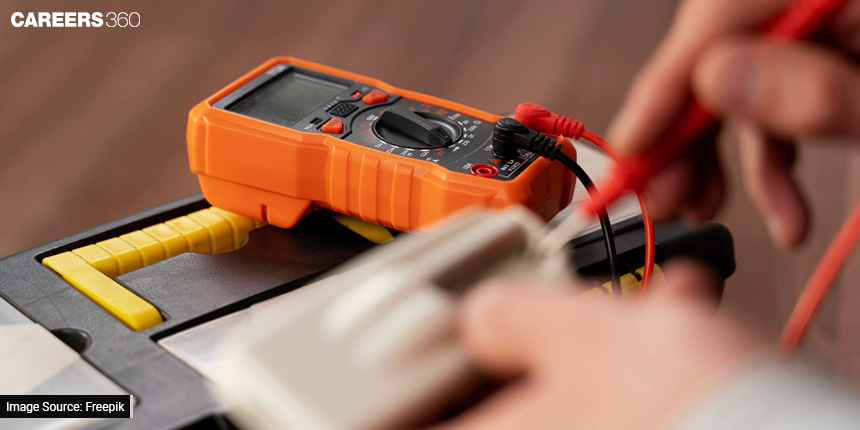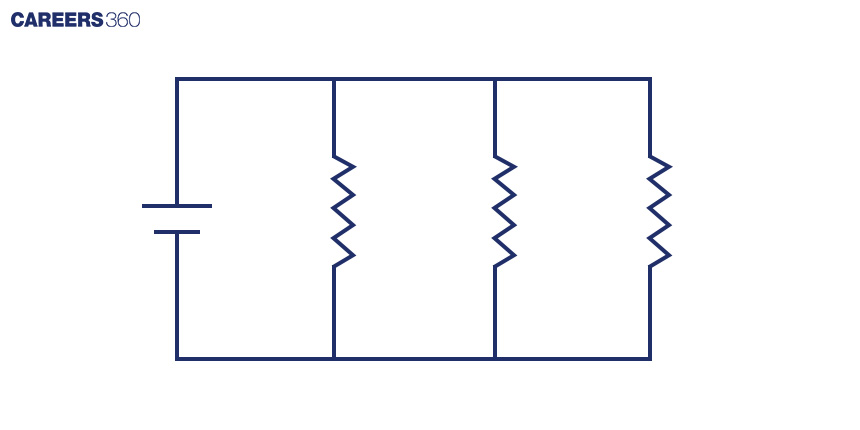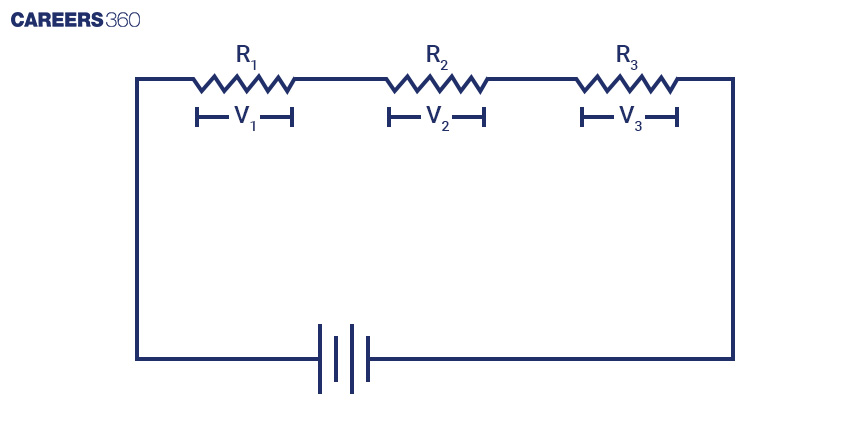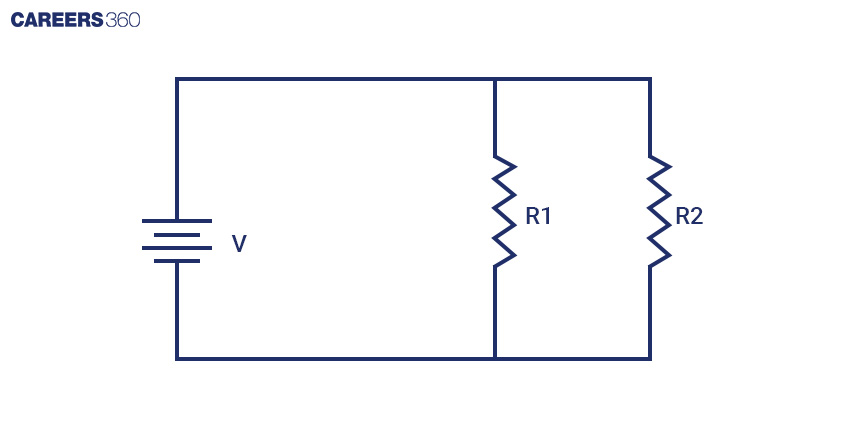Class 10 Science: Path of Electricity - Series and Parallel Circuits
Ever wondered how electricity moves around in things like lights, computers, and other devices? It's like a secret path that tiny particles called electrons follow. These paths are called circuits. There are two important ways we connect things in circuits: series and parallel. They might sound a bit tricky, but they're like roads for electrons. Imagine a series as a straight road where electrons follow each other. Parallel is like having many lanes, where electrons can take different roads at the same time.
This Story also Contains
- Series Circuits: Current Path and Behaviour
- Parallel Circuits: Multiple Current Paths
- Current Division in Parallel Circuits
- Voltage Distribution in Series and Parallel Circuits
- Practical Applications

Now, you might be wondering, "Why does this matter?" Great question! Think about a string of holiday lights. Have you noticed that if one light goes out, the whole string might stop working? That's because they're connected in series. But if you have a bunch of devices plugged into the same power source, like your computer, phone charger, and TV, they can all work without affecting each other. That's parallel.
In this article, we're going to explore these two ways of connecting things in circuits – series and parallel. We'll see how they change the way electricity flows and why they're really important in our everyday lives. So, let's jump in and uncover the secrets behind series and parallel circuits!
Series Circuits: Current Path and Behaviour
A series circuit is an electrical circuit in which components are connected end-to-end to form a single current route. Because there is only one possible path for the current to take in a series circuit, the same current flows through each component. When a component fails or is removed, the entire circuit is disrupted and no current can pass.
A series circuit connects components (such as resistors, capacitors, and inductors) sequentially, one after the other. The output terminal of one component is connected to the input terminal of the next component, and so on until all components are linked together in a chain. This linear structure ensures that the current passes through each component in sequence.
The current in a series circuit remains constant throughout the circuit. This is due to the fact that there is only one path for the current to follow, and the flow rate of electric charge (current) is constant throughout the circuit. The current flowing through each component is the same.
Parallel Circuits: Multiple Current Paths
A parallel circuit is an electrical circuit in which components are connected in many branches, allowing current to flow along multiple paths. The voltage across each component in a parallel circuit is the same, but the current can vary via each branch. If one branch fails or is removed, the other branches are unaffected, and the circuit remains operational.

The components in a parallel circuit are connected so that each component has its own direct connection to the voltage source. All of the positive terminals of the components are linked together, as are all of the negative terminals. This configuration allows current to travel in several parallel routes from the source to the components and back.
Unlike series circuits, which have the same current flowing through all components, parallel circuits split the current among the branches based on the individual resistances of the components. Parallel components have the same voltage but distinct current levels. When one branch has a lower resistance, more current flows through it, whereas higher-resistance branches carry less current.
In a parallel circuit, consider the following:
The total current entering the junction equals the sum of the currents in each branch.
Each component's voltage is the same and equal to the source voltage.
Current Division in Parallel Circuits
The distribution of electric current among the many parallel branches of a parallel circuit is referred to as the current division. The current entering the junction in a parallel circuit splits into many routes, with each branch carrying a percentage of the total current. The amount of current in each branch is determined by its resistance.
Calculation of Individual Branch Currents using Ohm's Law
The current in each parallel branch is calculated using Ohm's Law (I = V/R). Because the voltage across all branches is the same (due to their parallel connection), the resistance dictates how much current flows through each branch. The formula for calculating current in a specific branch is as follows:
Ibranch=Vsource/Rbranch
Where:
Ibranch is the current in the specific branch, Vsource is the voltage of the source connected to the parallel circuit and Rbranch is the resistance of the specific branch.
Consider a parallel circuit with two branches, A and B. According to Ohm's Law, if Branch A has a lower resistance than Branch B, it will allow greater current to flow through it. Branch B, on the other hand, will carry less current due to its higher resistance. This will show the idea of current division: the lower resistance branch draws more current, while the higher resistance branch carries less.
Voltage Distribution in Series and Parallel Circuits
A series circuit connects components one after the other to produce a single path for current flow. Based on their specific resistances, the voltage across the entire series circuit is split among the components. The voltage across a component is precisely proportional to its resistance, according to Ohm's Law (V = IR). Higher resistance components will have a larger voltage drop across them, while lower resistance components will have a lesser voltage drop.
Each branch in a parallel circuit has its own direct connection to the voltage source. This means that the voltage across each branch is equal to the voltage at the source. The current across each branch, however, can vary depending on the resistance of the components inside that branch.
Examples Illustrating How Voltage Impacts Component Behaviour
Series Circuits - Voltage Division

For the series circuit shown:
Voltage drop across R1: VR1=Vsource*R1/R1+R2+R3
Voltage drop across R2: VR2=Vsource*R2/R1+R2+R3
Voltage drop across R3: VR3=Vsource*R3/R1+R2+R3
The sum of these voltage drops will equal the source voltage:
Vsource= VR1+ VR2+VR3
Parallel Circuits - Voltage Consistency

In a parallel circuit with resistors, R1 and R2 both resistors have the same voltage across them, which is equal to the source voltage: Vsource= VR1= VR2
Practical Applications
Series connections were once used in Christmas lights, causing the entire string to go dark if one bulb failed. Modern LED lights, on the other hand, use parallel connections, allowing other LEDs to remain glowing even if one fails. This arrangement makes troubleshooting easier and less inconvenient.
Electronics use series connections in battery packs to achieve higher voltages, which is important for devices such as laptop computers. On the other hand, parallel connections enhance current capacity, extending runtime in applications such as electric automobiles. Power and performance are improved by balancing series and parallel connections.
Parallel connections are preferred in building wiring for safety and efficiency. In contrast to series circuits, where a single defect can interrupt the entire circuit, parallel circuits ensure localised problems. Individual operation is possible since outlets and lights are wired in parallel. This configuration improves dependability and reduces voltage drop, which is crucial for consistent performance.
With this newfound knowledge of series and parallel circuits, you hold the key to understanding the intricate choreography of electrons, illuminating the way devices and technologies come alive, and enriching our daily experiences.
Applications for Admissions are open.
As per latest syllabus. Physics formulas, equations, & laws of class 11 & 12th chapters
JEE Main Important Chemistry formulas
Get nowAs per latest syllabus. Chemistry formulas, equations, & laws of class 11 & 12th chapters
JEE Main high scoring chapters and topics
Get nowAs per latest 2024 syllabus. Study 40% syllabus and score upto 100% marks in JEE
JEE Main Important Mathematics Formulas
Get nowAs per latest syllabus. Maths formulas, equations, & theorems of class 11 & 12th chapters

